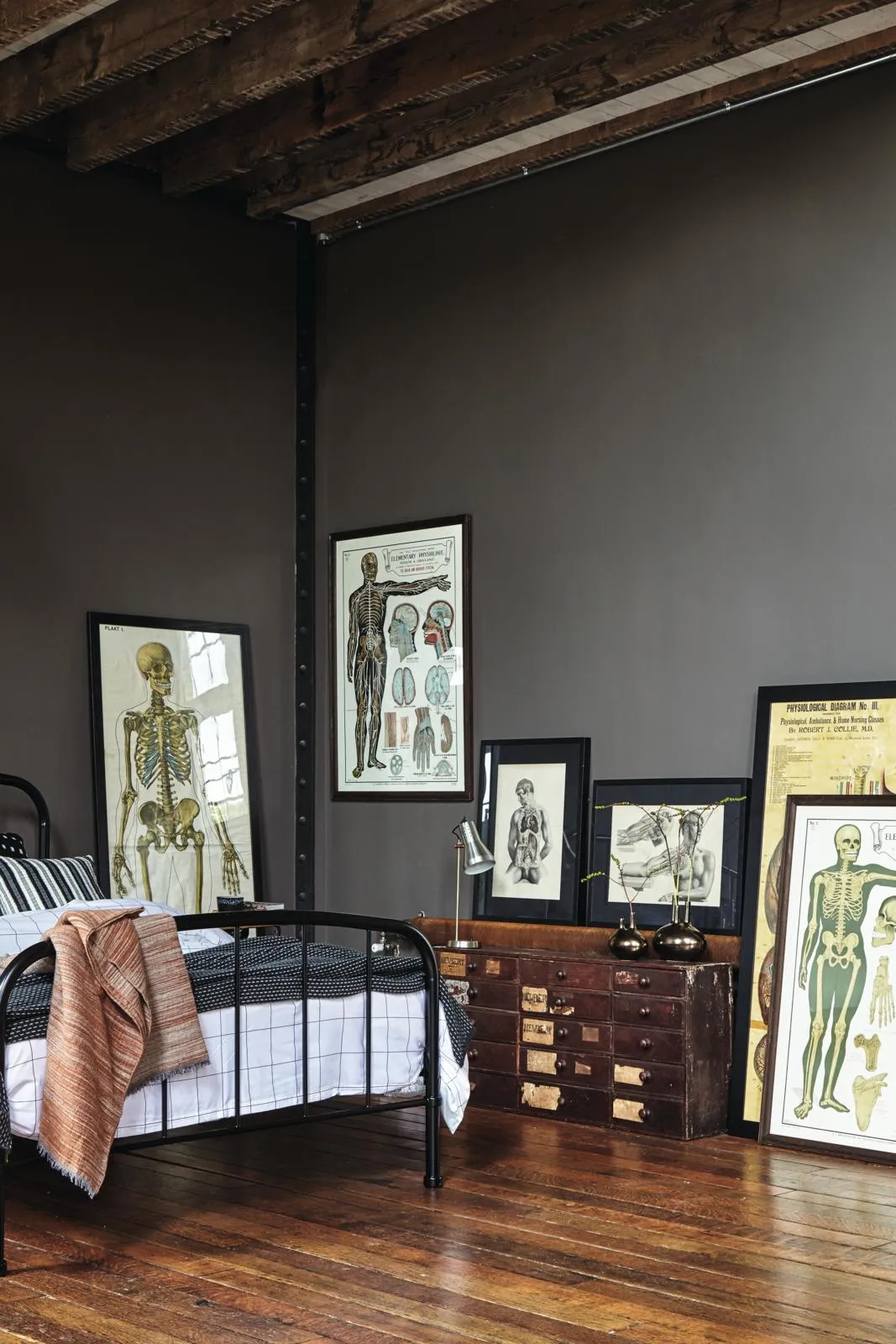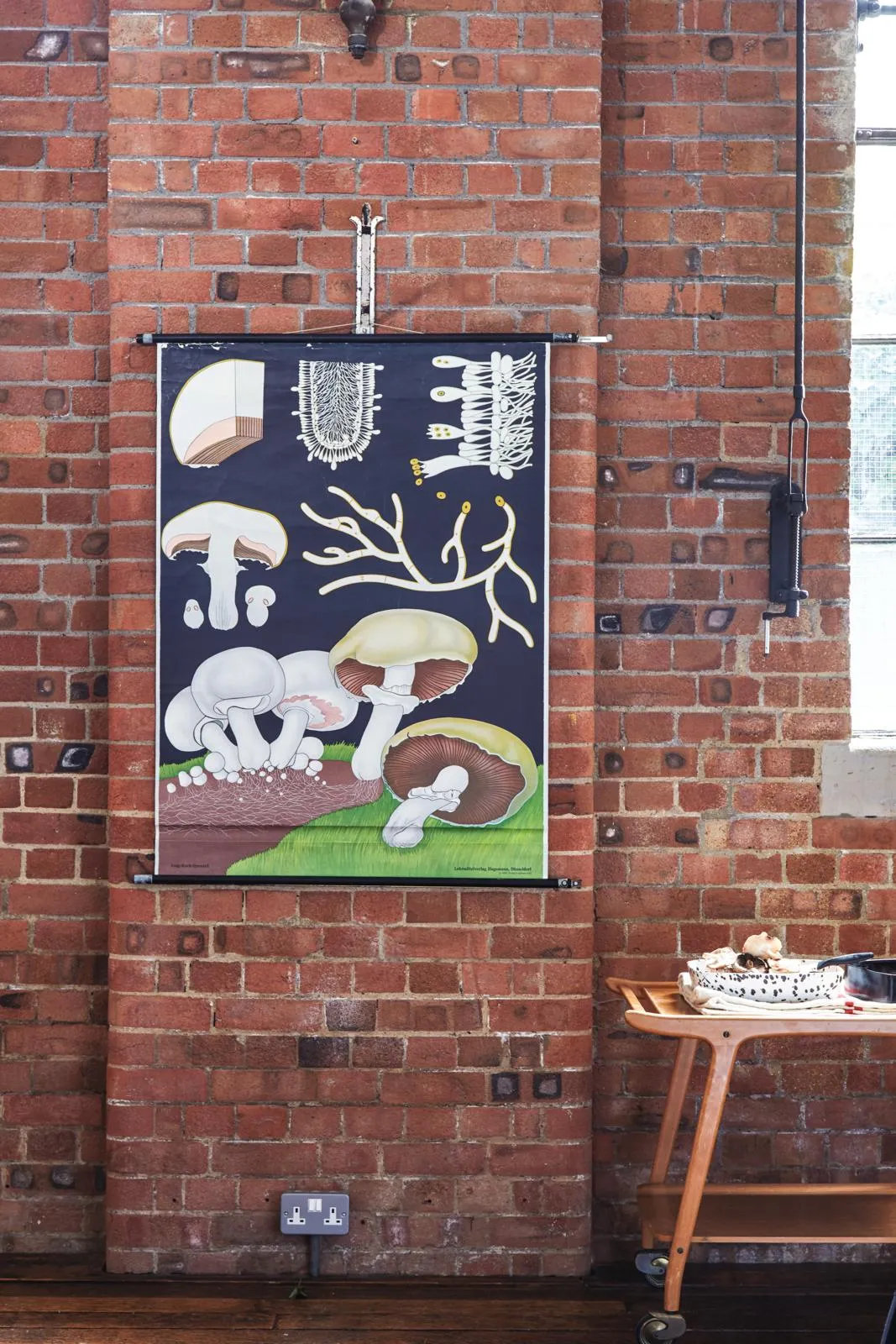The 19th century was an exciting time in the classrooms of Europe. It was a golden age of scientific advancement, with naturalists discovering exotic crops and delicacies such as bananas, coconuts and coffee being shipped in. At the same time, education was expanding across the social spectrum.
Suddenly, children who had never seen a pineapple or other foreign crops could gaze at illustrations of them on wall charts. Before long, these educational aids encompassed all manner of subjects; the teacher, pointer in hand, would tap the charts and explain how a cocoa bean became chocolate, the life cycle of an insect or the anatomy of homo sapiens.
‘It was the equivalent of a 60in television screen and all in technicolour,’ says Antiques Roadshow specialist Adam Schoon. ‘Hundreds of students could see the chart at the same time. Even a child daydreaming in the back row couldn’t ignore these striking images on the walls.’
Find out what the difference between vintage and antique is here.

Today, educational wall charts are prized by collectors and interior designers. Rendered obsolete in a digital age, these leftovers from bygone classrooms are highly coveted yet still relatively affordable. They are also a key part of the industrial, old schoolroom interiors look that sees institutional pieces such as blackboards, desks, laboratory apparatus and gym lockers making statements in our homes.
Wall charts originally appeared during a time of educational reform in Germany. ‘The first wall charts authored expressly for classroom use were produced in 1820 and depicted everyday objects and concepts, such as the seasons and animals,’ explains Anna Laurent, author of the book The Botanical Wall Chart: Art from the Golden Age of Scientific Discovery. ‘During the following 40 years, they increased in ubiquity, format and subject matter, and were developed for levels of higher education, and specialised curricula.’
As the student population grew, wall charts made it possible for teachers to show supporting visuals in large classrooms. ‘Illustration was considered the perfect format to teach science, as illustrators were able to emphasise certain features
of a species,’ says Laurent. Subjects ranged from zoology to history, but botany seemed to lend itself best to the medium.

Up until that period, scientific books and illustrations had been exclusively for the wealthy and aristocratic, or for physicians. ‘Knowledge of the natural world had only belonged to the rich and those who could afford to hunt for plants in China and the Middle East,’ says Schoon. ‘But by the late 18th and early 19th centuries it was all happening with modern printing, the Industrial Revolution and a burgeoning middle class.’
Wall charts were circulated in series and lithographically printed – a process invented in 1798 that made it possible to print unlimited copies. The lithograph was printed on paper, and some would be mounted on canvas with wooden rods at either end. Professors, biologists, writers, botanists and illustrators would work together to produce wall charts, books and series.
Leopold Kny, professor of plant physiology at the University of Berlin, produced Botanische Wandtafeln (botanical wall panels), a series of 117 highly detailed botanical wall charts published between 1874 and 1911. They are some of the most expensive today, selling for around £1,000–£1,500. Up there with Kny’s are the zoological charts designed by Austrian Dr Paul Pfurtscheller, who produced a series of 39 designs from 1902 onwards with prices up to £2,000.

The most iconic and popular wall charts, however, are those with the signature black backgrounds by teacher Heinrich Jung, biologist Dr Friedrich Quentell, and painter Professor Gottlieb von Koch, published from around 1900, which depict both flora and fauna. Rare originals sell for £600–£800, while updated versions printed in the 1950s are around £250. Other names to look for are Madeleine and André Rossignol, whose French, mid-century charts are distinctive for their sans serif typography, flat colour and clean lines. They tend to sell for around £50.
Hundreds of thousands of these educational charts were produced across Europe but many degraded over time or were burnt as they were superseded by new teaching methods. ‘After all, they were produced as teaching tools not fine art,’ says Laurent. ‘Those that survive are collected in dusty cabinets in archives, universities, museums, herbariums, and libraries around the world.’

The popularity of a wall chart depends on the graphics, colours, typography and subject matter. ‘The richer, more luxurious and more exotic the subject, the more people like them,’ says Schoon. ‘How barley develops in a field, for instance, might not have the same appeal as the growth of a palm tree.’
Condition is all-important. ‘Avoid those that are badly creased or have tears, or are taped at the edges,’ says Schoon. ‘The chemical content of the inks means the charts can take on a tan colouration, so avoid these too. They could also be faded, having been in the window of a classroom in the direct sun for years.’
That said, Schoon admits that the charm might well be in the wear and tear – the evidence of a past life faithfully served in a classroom. ‘It’s romantic to think of the thousands of schoolchildren who must have gazed at them,’ he says.


